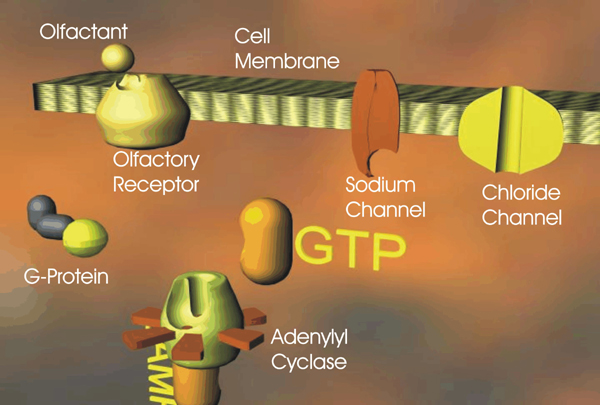Adenylyl Cyclase is an enzyme that converts ATP into cAMP, the key second messenger in this metabotropic pathway
The G-protein or GTP-binding protein binds to GTP when activated. Then a subunit of the g-protein signals the enzyme Adenylyl cyclase to begin synthesizing cAMP.
The olfactory receptor binds the olfactant (0dorant) to begin the transduction process. The receptor leads to the activation of the g-protein called Golf in the case of olfactory receptors.
The chloride channel is opened by Ca acting as a second messenger. The chloride concentration is reversed in these receptors, putting the reversal potential at a postive value. Therefore, when the chloride channels open, the membrnae is depolarized. This depolarization acts in synergy with the depoarization due to sodium channel opening, enhancingt the olfractory response.
Click on the Names of Each of the Components of the Olfactory Transduction Cascade

